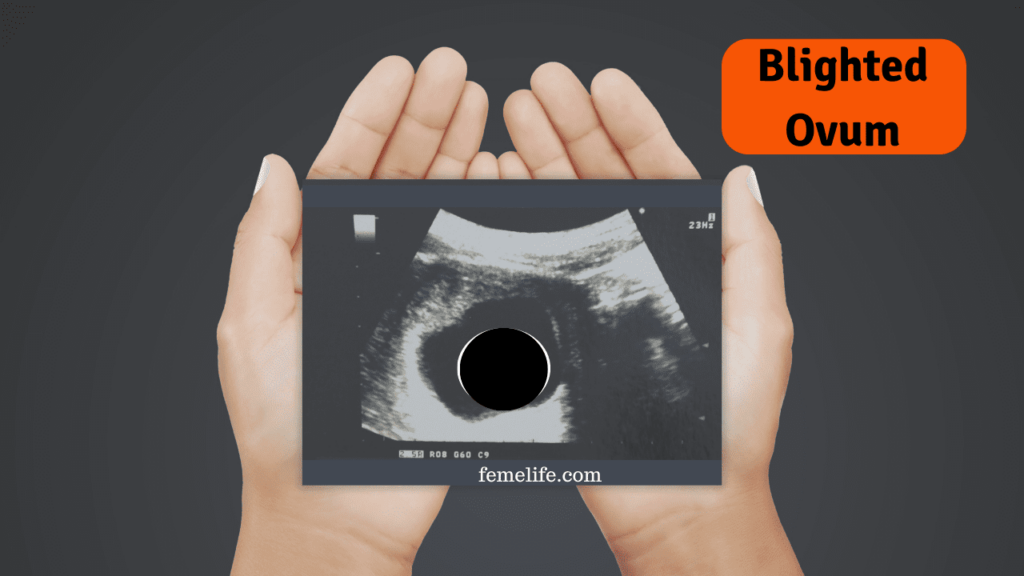The blighted ovum is also called as anembryonic pregnancy. It is a type of early miscarriage that occurs when a fertilized egg implants into the uterus but does not develop into an embryo.
The embryo in the uterus will stop growing, but the gestational sac which is the place for embryo to develop continues to grow. The placenta and empty gestational sac will start releasing pregnancy hormones even without an embryo resulting in early symptoms of pregnancy or even confirm with pregnancy test.
It occurs very early in pregnancy, often before a woman realizes pregnancy. A blighted ovum is certainly a miscarriage. A miscarriage is a loss of pregnancy before 20 weeks whereas in this case it is considered as an early miscarriage. Most often it occurs before 13 weeks of pregnancy. The chances of having anembryonic pregnancy with IVF treatment are about the same as they would be with a natural conception.
What causes anembryonic pregnancy?
The exact cause of a anembryonic pregnancy is unknown. However, most probable cause is chromosomal or genetic issues during cell division.
The time when sperm fertilizes the egg during conception is where divison occurs. Poor-quality eggs, sperm, or genetic abnormalities may be reason for blighted ovum.
If the partner is biologically related to women ,there is a higher risk of blighted ovum. However, women who experiences blighted ovum do go on to have successful pregnancies and healthy babies in the future .
Symptoms with a blighted ovum
A blighted ovum occurs so early in pregnancy before most women recognize that they are pregnant. People have signs of pregnancy such as a missed or late menstrual period. Women believe that their pregnancies are on good track because their HCG levels are increasing.
The placenta continues to grow and support itself without a baby for a short time, and the pregnancy hormones also rises which make a women to believe she is pregnant.
A diagnosis is usually not made until ultrasound shows either an empty womb or an empty gestational sac. Women may have minor cramps in abdomen and minor vaginal bleeding or spotting.
Sometime symptoms will resemble those of a miscarriage:
Vaginal bleeding:Spotting or light bleeding, passing light gray tissue or blood clots.
Cramping:Mild to moderate cramping pain in the abdominal region.
- An ultrasound scan will confirm a gestational sac that is missing an embryo inside.
- Symptoms that get worse over time
- Excessive bleeding from your vagina.
- Dizziness or fainting.
- Fever that does not go away.
- Severe pain
Different types of abnormal pregnancy
| False positive pregnancy | Positive result from a home pregnancy test when you’re not pregnant is called a false-positive pregnancy. It can happen if you have lost the pregnancy soon after implantation. |
| Ectopic Pregnancy | An ectopic pregnancy is when the embryo implants in one of the fallopian tubes or outside of uterus. |
| Biochemical Pregnancy | A chemical pregnancy is where the initial pregnancy test is positive but does not progress into a clinical pregnancy. |
| Pseudo Pregnancy | It is an mental illness where a person thinks she is pregnant in absence of a pregnancy. |
| Anembryonic Pregnancy | When a pregnancy sac grows without an embryo it is called blighted ovum. |
| Molar Pregnancy | Instead of an embryo the uterus is filled of grape like structures inside a gestation sac. |
How to identify a blighted ovum pregnancy?
The physician will diagnose a blighted ovum through transvaginal ultrasound. This happens in the first trimester of pregnancy usually between seven and nine weeks.
An embryo will be visible by this time in pregnancy. A blighted ovum, ovum will have an empty gestational sac.
- The patient is put on lithotomy position for pelvic examination. The physcian will put an ultrasound probe into your vagina to see the contents of your uterus.
- A blighted ovum will like a bubble.
- A ovum is called a blighted ovum when the gestational sac containing the embryo is empty.
- People are often unaware that they have a blighted ovum because the placenta continue to produce hormones which makes the patient that they are pregnant.
- If the patient has bleeding or signs of a miscarriage, the doctor will use ultrasound to look at the contents of your uterus to diagnose a blighted ovum.
- The doctors will collect a series of blood samples to check the levels of Hcg (human chorionic gonadotropin) in your body.
- HCG, known as the pregnancy hormone is produced only if you are pregnant. The level of hCG in blood increases rapidly in early pregnancy and reaches high around eight to ten weeks. If it is not rising quickly, it indicates miscarriage or other complications.
- HCG levels are evaluated which helps to distinguish blighted ovum. This will be effective tool for diagnosing blighted ovum.
Management of blighted ovum pregnancy
There may be no treatment necessary because your body passes the embryo through your vagina as a miscarriage process.
Dilation and Curettage: A surgical procedure to remove the contents of your uterus. The Doctor will dilate the cervix and use medical instruments and suction to remove the pregnancy tissues from your uterus. This is done under general anesthesia
Natural miscarriage : Often these pregnancies end in natural expulsion. The body eventually releases the pregnancy tissues. However, this may take some time in certain cases. The patient will experience cramping, abdominal pain and bleeding once the miscarriage begins.
Medication induced miscarriage : Certain medications are given to start the process of miscarriage. The patient will have cramping, abdominal pain and bleeding within 30 minutes to ten hours of taking the medication.
What complications are possible?
The possible complications includes:
- Excessive bleeding or hemorrhage.
- Infection in some cases
- Scarring from the D&C procedure
- Tearing of tissues in the uterus during the D&C procedure

